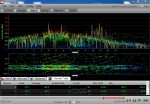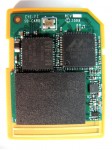Virtual desktop designs tend to overlook two key infrastructure components: Storage responsiveness and wireless network availability and performance. Yet without these two ingredients, VDI is doomed!
802.11n
Teaching Science with Wi-Fi (Thanks, Ruckus and MetaGeek!)
As a parent, especially a techie one, you never know when a teachable moment is going to appear. Last night, I mentioned that I was testing a new Ruckus access point and enthused about how fast it was. My 12-year-old asked, “why is it so fast?†This led to a wonderful discussion about radio waves, congestion and propagation, and spectrum licensing. Yeah, I’m that kind of dad.
Which Apple Devices Support 802.11n Wi-Fi?
It is nice to see Apple out in front with a technology like 802.11n, considering their reluctance to support Blu-Ray and USB 3.0. Although expensive, the AirPort Extreme and 2011 MacBook Pro and iMac sport top-of-the-line specs and high performance Wi-Fi. But the lack of 5 GHz support across the board means many users will stick to the crowded 2.4 GHz spectrum, limiting performance.
What Are The True Eye-Fi X2 802.11n Wi-Fi Capabilities?
Eye-Fi (the company) would rather that we focus on the capabilities of their card rather than its technical components. But any self-respecting geek is going to want to know what makes it tick! I’d rather not cut open my card to get a peek at the chips inside, but Eye-Fi released some official details about the components used in the X2 series of cards, and a quick Google search revealed all that I needed to know.
Not All 802.11n Networks Are Alike
Buyers of 802.11n wireless network equipment should not assume they will see a great benefit right out of the box. Most will have to enable by hand a high-performance configuration including wide channels and 5 GHz operation. And some client devices may never reach the levels of performance expected by consumers due to hardware limitations.




